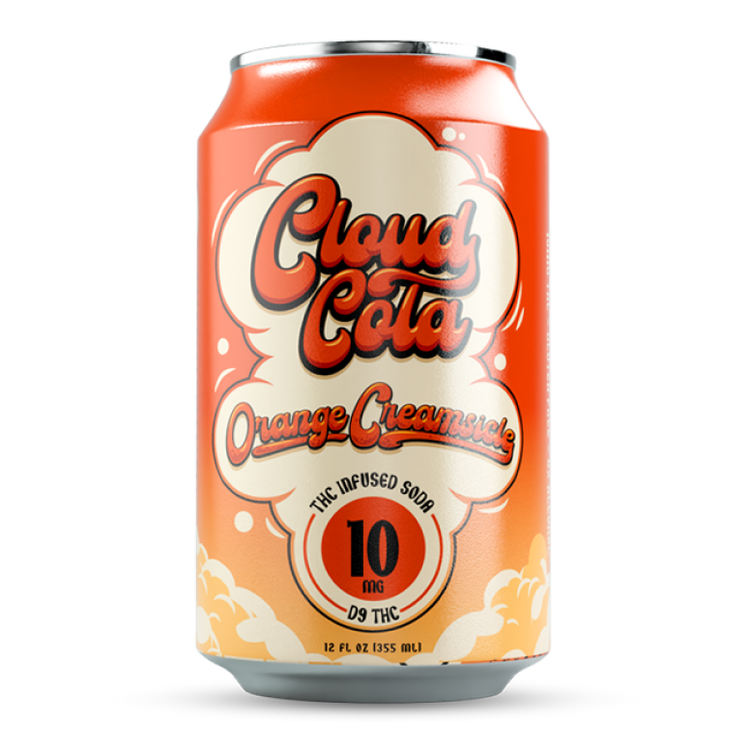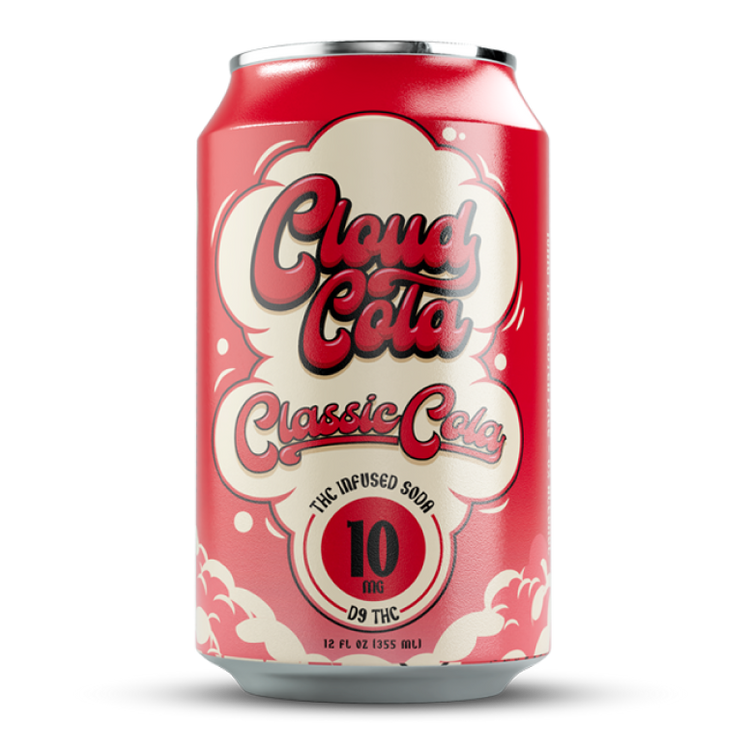Types of Drug Tests
Drug tests are commonly used in various settings, including employment screenings, court cases, and for medical purposes. There are several different types of drug tests available, each with its own detection window and accuracy.
Urine Tests
One of the most common types of drug tests is a urine test. This type of test involves collecting a urine sample which is then analyzed in a lab for the presence of drugs or their metabolites. Urine tests are relatively inexpensive and easy to administer, making them a popular choice for employers and other organizations.
THC, the psychoactive component in marijuana, can be detected in urine for varying lengths of time depending on factors such as frequency of use, metabolism, and individual body chemistry.
Generally, THC metabolites can remain detectable in urine for several days to weeks after last use.
Blood Tests
Blood tests are another type of drug test that can be used to detect the presence of drugs in the body. These tests involve collecting a blood sample from the individual and analyzing it for drugs or their metabolites in a laboratory setting.
Blood tests tend to have a shorter detection window compared to urine tests because they measure the concentration of active drugs rather than their metabolites.
- Urine Tests
- Blood Tests
- Hair Follicle Tests
- Saliva Tests
- Breathalyzers

THC, the psychoactive component in marijuana, can be detected in a blood test for up to 24 hours after last use.
Hair Follicle Tests
Hair follicle drug tests are a type of screening that analyzes hair samples for the presence of drugs and their metabolites.
These tests are known for having an extended detection window compared to other methods, as they can reveal drug use dating back several months.
This is because drug residues get trapped in hair follicles as they grow.
Saliva Tests
Saliva tests are a relatively new type of drug test that involve collecting a saliva sample.
These tests are known for being quick and easy to administer, making them convenient for various situations.
Like urine tests, they can detect the presence of drugs or their metabolites in the body fluids.
The detection window for saliva drug tests is generally shorter than that of urine tests but longer than blood tests.
How Long THC Stays in Your System
Drug tests are a common way to screen for substance use, and understanding how long THC stays in your system is crucial if you’re subject to such screenings. The detection window varies depending on factors like frequency of use, metabolism, and the type of drug test used.
Factors Affecting Detection Time
THC, the primary psychoactive compound in marijuana, can be detected in various body fluids for varying durations. The length of detection depends on several factors, including frequency of use, individual metabolism, body mass, and the specific type of drug test employed.
Urine tests are widely used for drug screening due to their relative cost-effectiveness and ease of administration. THC metabolites can be detectable in urine for a few days to several weeks after last use, with heavier users potentially showing positive results for longer periods.
Blood tests, while less common for detecting marijuana use, can detect THC for a shorter duration, typically up to 24 hours post-consumption. This is because they measure the concentration of active THC rather than its metabolites.
Hair follicle drug tests provide the longest detection window among available methods. They analyze hair samples for drug residues, potentially revealing marijuana use dating back several months. This extended detection period stems from the fact that drugs are trapped within hair follicles as they grow.
Saliva drug tests offer a rapid and convenient screening method with a detection window generally shorter than urine tests but longer than blood tests.
Frequency of Use
The length of time THC remains detectable in your system varies depending on several factors, primarily frequency of use.
Occasional users may show THC metabolites in their urine for a few days, while heavy daily users can test positive for weeks or even months.
Body Mass Index
Drug tests are commonly used to screen for drug use, and understanding how long THC stays in your system is crucial if you’re subject to such screenings. The detection window varies depending on factors like frequency of use, metabolism, and the type of drug test used.
THC, the primary psychoactive compound in marijuana, can be detected in various body fluids for varying durations. The length of detection depends on several factors, including frequency of use, individual metabolism, body mass, and the specific type of drug test employed.
Urine tests are widely used for drug screening due to their relative cost-effectiveness and ease of administration. THC metabolites can be detectable in urine for a few days to several weeks after last use, with heavier users potentially showing positive results for longer periods.
Blood tests, while less common for detecting marijuana use, can detect THC for a shorter duration, typically up to 24 hours post-consumption. This is because they measure the concentration of active THC rather than its metabolites.
Hair follicle drug tests provide the longest detection window among available methods. They analyze hair samples for drug residues, potentially revealing marijuana use dating back several months. This extended detection period stems from the fact that drugs are trapped within hair follicles as they grow.
Saliva drug tests offer a rapid and convenient screening method with a detection window generally shorter than urine tests but longer than blood tests.
The length of time THC remains detectable in your system varies depending on several factors, primarily frequency of use.
Occasional users may show THC metabolites in their urine for a few days, while heavy daily users can test positive for weeks or even months.
Metabolism
Drug tests are commonly used to screen for substance use, and understanding how long THC stays in your system is crucial if you’re subject to such screenings. The detection window varies depending on factors like frequency of use, metabolism, and the type of drug test used.
THC, the primary psychoactive compound in marijuana, can be detected in various body fluids for varying durations. The length of detection depends on several factors, including frequency of use, individual metabolism, body mass, and the specific type of drug test employed.
Urine tests are widely used for drug screening due to their relative cost-effectiveness and ease of administration. THC metabolites can be detectable in urine for a few days to several weeks after last use, with heavier users potentially showing positive results for longer periods.
Blood tests, while less common for detecting marijuana use, can detect THC for a shorter duration, typically up to 24 hours post-consumption. This is because they measure the concentration of active THC rather than its metabolites.
Hair follicle drug tests provide the longest detection window among available methods. They analyze hair samples for drug residues, potentially revealing marijuana use dating back several months. This extended detection period stems from the fact that drugs are trapped within hair follicles as they grow.
Saliva drug tests offer a rapid and convenient screening method with a detection window generally shorter than urine tests but longer than blood tests.
The length of time THC remains detectable in your system varies depending on several factors, primarily frequency of use.
Occasional users may show THC metabolites in their urine for a few days, while heavy daily users can test positive for weeks or even months.
Types of THC Products and Detection Times
There are various types of drug tests used to detect substances like THC, the psychoactive component in marijuana. Urine tests, which analyze a sample of your urine, are common due to their cost-effectiveness and ease of use. Blood tests offer a shorter detection window as they measure active THC levels. Hair follicle tests can reveal drug use dating back several months by analyzing hair samples for drug residues. Saliva tests provide a rapid screening method with a detection window generally shorter than urine tests but longer than blood tests.
Marijuana Flower
Drug tests are commonly used in various settings, including employment screenings, court cases, and for medical purposes. There are several different types of drug tests available, each with its own detection window and accuracy.
One of the most common types of drug tests is a urine test. This type of test involves collecting a urine sample which is then analyzed in a lab for the presence of drugs or their metabolites. Urine tests are relatively inexpensive and easy to administer, making them a popular choice for employers and other organizations.
THC, the psychoactive component in marijuana, can be detected in urine for varying lengths of time depending on factors such as frequency of use, metabolism, and individual body chemistry.
Generally, THC metabolites can remain detectable in urine for several days to weeks after last use.
Blood tests are another type of drug test that can be used to detect the presence of drugs in the body. These tests involve collecting a blood sample from the individual and analyzing it for drugs or their metabolites in a laboratory setting.
Blood tests tend to have a shorter detection window compared to urine tests because they measure the concentration of active drugs rather than their metabolites.
- Urine Tests
- Blood Tests
- Hair Follicle Tests
- Saliva Tests
- Breathalyzers
THC, the psychoactive component in marijuana, can be detected in a blood test for up to 24 hours after last use.
Hair follicle drug tests are a type of screening that analyzes hair samples for the presence of drugs and their metabolites.
These tests are known for having an extended detection window compared to other methods, as they can reveal drug use dating back several months.
This is because drug residues get trapped in hair follicles as they grow.
Saliva tests are a relatively new type of drug test that involve collecting a saliva sample.
These tests are known for being quick and easy to administer, making them convenient for various situations.
Like urine tests, they can detect the presence of drugs or their metabolites in the body fluids.
The detection window for saliva drug tests is generally shorter than that of urine tests but longer than blood tests.
Drug tests are a common way to screen for substance use, and understanding how long THC stays in your system is crucial if you’re subject to such screenings. The detection window varies depending on factors like frequency of use, metabolism, and the type of drug test used.
THC, the primary psychoactive compound in marijuana, can be detected in various body fluids for varying durations. The length of detection depends on several factors, including frequency of use, individual metabolism, body mass, and the specific type of drug test employed.
Urine tests are widely used for drug screening due to their relative cost-effectiveness and ease of administration. THC metabolites can be detectable in urine for a few days to several weeks after last use, with heavier users potentially showing positive results for longer periods.
Blood tests, while less common for detecting marijuana use, can detect THC for a shorter duration, typically up to 24 hours post-consumption. This is because they measure the concentration of active THC rather than its metabolites.

Hair follicle drug tests provide the longest detection window among available methods. They analyze hair samples for drug residues, potentially revealing marijuana use dating back several months. This extended detection period stems from the fact that drugs are trapped within hair follicles as they grow.
Saliva drug tests offer a rapid and convenient screening method with a detection window generally shorter than urine tests but longer than blood tests.
The length of time THC remains detectable in your system varies depending on several factors, primarily frequency of use.
Occasional users may show THC metabolites in their urine for a few days, while heavy daily users can test positive for weeks or even months.
Edibles
THC detection times vary greatly depending on several factors.
* **Urine Tests:** These are the most common type and can detect THC metabolites for days to weeks after use, with heavier users testing positive longer.
* **Blood Tests:** Less common for marijuana detection, blood tests show THC for up to 24 hours post-consumption as they measure active THC levels.
* **Hair Follicle Tests:** These are the most sensitive, revealing drug use dating back several months because hair grows and traps residues.
* **Saliva Tests:** A newer method, saliva tests offer a detection window shorter than urine but longer than blood.
Edibles, being ingested rather than smoked or vaporized, tend to have longer THC detection times due to slower absorption and metabolism.
Vaping
Drug tests are commonly used in various settings, including employment screenings, court cases, and for medical purposes. There are several different types of drug tests available, each with its own detection window and accuracy.
One of the most common types of drug tests is a urine test. This type of test involves collecting a urine sample which is then analyzed in a lab for the presence of drugs or their metabolites. Urine tests are relatively inexpensive and easy to administer, making them a popular choice for employers and other organizations.
THC, the psychoactive component in marijuana, can be detected in urine for varying lengths of time depending on factors such as frequency of use, metabolism, and individual body chemistry. Generally, THC metabolites can remain detectable in urine for several days to weeks after last use.
Blood tests are another type of drug test that can be used to detect the presence of drugs in the body. These tests involve collecting a blood sample from the individual and analyzing it for drugs or their metabolites in a laboratory setting.
Blood tests tend to have a shorter detection window compared to urine tests because they measure the concentration of active drugs rather than their metabolites.
- Urine Tests
- Blood Tests
- Hair Follicle Tests
- Saliva Tests
- Breathalyzers
THC, the psychoactive component in marijuana, can be detected in a blood test for up to 24 hours after last use.
Hair follicle drug tests are a type of screening that analyzes hair samples for the presence of drugs and their metabolites. These tests are known for having an extended detection window compared to other methods, as they can reveal drug use dating back several months.
This is because drug residues get trapped in hair follicles as they grow.
Saliva tests are a relatively new type of drug test that involve collecting a saliva sample. These tests are known for being quick and easy to administer, making them convenient for various situations. Like urine tests, they can detect the presence of drugs or their metabolites in the body fluids.
The detection window for saliva drug tests is generally shorter than that of urine tests but longer than blood tests.
Drug tests are a common way to screen for substance use, and understanding how long THC stays in your system is crucial if you’re subject to such screenings. The detection window varies depending on factors like frequency of use, metabolism, and the type of drug test used.
THC, the primary psychoactive compound in marijuana, can be detected in various body fluids for varying durations. The length of detection depends on several factors, including frequency of use, individual metabolism, body mass, and the specific type of drug test employed.
Urine tests are widely used for drug screening due to their relative cost-effectiveness and ease of administration. THC metabolites can be detectable in urine for a few days to several weeks after last use, with heavier users potentially showing positive results for longer periods.

Blood tests, while less common for detecting marijuana use, can detect THC for a shorter duration, typically up to 24 hours post-consumption. This is because they measure the concentration of active THC rather than its metabolites.
Hair follicle drug tests provide the longest detection window among available methods. They analyze hair samples for drug residues, potentially revealing marijuana use dating back several months. This extended detection period stems from the fact that drugs are trapped within hair follicles as they grow.
Saliva drug tests offer a rapid and convenient screening method with a detection window generally shorter than urine tests but longer than blood tests.
The length of time THC remains detectable in your system varies depending on several factors, primarily frequency of use. Occasional users may show THC metabolites in their urine for a few days, while heavy daily users can test positive for weeks or even months.
Tinctures
THC detection times vary greatly depending on several factors:
* **Urine Tests:** These are the most common and can detect THC metabolites for days to weeks after use, with heavier users testing positive longer.
* **Blood Tests:** Less common for marijuana detection, blood tests show THC for up to 24 hours post-consumption as they measure active THC levels.
* **Hair Follicle Tests:** These are the most sensitive, revealing drug use dating back several months because hair grows and traps residues.
* **Saliva Tests:** A newer method, saliva tests offer a detection window shorter than urine but longer than blood.
**Tinctures**
Tinctures are cannabis extracts dissolved in alcohol or glycerin. Because they are absorbed quickly into the bloodstream, THC from tinctures can be detected for a similar duration to smoking or vaping, potentially for several days to weeks depending on frequency of use and individual factors like metabolism.
The most important factor affecting detection time is how often you consume THC. Occasional users may have shorter detection windows than those who use daily.
Avoiding THC Detection in Drug Tests
Determining if THC will show up on a drug test depends on several factors, including the type of drug test used, the frequency and amount of marijuana consumption, individual metabolism, and body mass.
Timing Your Usage
Timing your cannabis use to avoid detection on a drug test is a complex matter. There’s no guaranteed method, as factors like individual metabolism and the sensitivity of the specific drug test can vary widely.
However, here are some general guidelines:
* **Understand the Detection Windows:** Urine tests tend to be the most common and longest-lasting, detecting THC for days to weeks, depending on usage frequency. Blood tests detect THC for a shorter period (up to 24 hours). Hair follicle tests offer the longest window, potentially revealing use from months past. Saliva tests fall between urine and blood in detection time.
* **Choose Your Test Wisely:** If possible, find out what type of drug test you’ll be taking to better understand your timeframe.
* **Frequency Matters Most:** The more frequently you use cannabis, the longer THC is likely to be detectable. Occasional users may have shorter detection windows than daily or frequent users.
* **Hydrate Extensively:** Drinking plenty of water may help flush out THC metabolites from your system, but this isn’t a foolproof method.
* **Consider Detox Products:** While their effectiveness varies, detox drinks and supplements claim to help cleanse the body of THC. Research them carefully, as some may be ineffective or contain potentially harmful ingredients.
* **Consult with a Medical Professional:** A doctor can provide personalized advice based on your individual health and situation.
**Disclaimer:** This information is for general knowledge purposes only and should not be considered medical advice. Consulting a healthcare professional is always recommended for personalized guidance.
Detoxification Methods
Synthetic Urine
Synthetic urine is a product designed to mimic the chemical composition of human urine, often used by individuals seeking to pass drug tests.
While synthetic urine products are available on the market, it’s important to note that using them can be risky and may have legal consequences.
Here’s why using synthetic urine to avoid THC detection is a questionable strategy:
* **Detection Technology:** Drug testing labs are increasingly sophisticated in their ability to detect adulterants and artificial substances. Advanced testing methods can often identify synthetic urine, resulting in a failed test even if the product initially appears successful.
* **Temperature Irregularities:** Drug tests often involve temperature checks to ensure the sample is genuine. Synthetic urine may not have the same temperature as real urine, raising suspicion and leading to disqualification.
* **Chemical Composition:** While synthetic urine aims to replicate human urine, minor inconsistencies in its chemical makeup can be detected by lab technicians experienced in identifying adulteration attempts.
* **Legality and Ethics:** In many jurisdictions, using synthetic urine to deceive a drug test is considered cheating and may have legal ramifications, especially in employment or court-related contexts.
The risks associated with using synthetic urine often outweigh any perceived benefits.
It’s generally advisable to focus on legitimate methods for avoiding THC detection if necessary, such as abstaining from marijuana use within the recommended timeframe before the test or consulting with a medical professional about potential detox options.
False-Negative Test Strips
Understanding how long THC stays in your system is crucial if you anticipate undergoing a drug test. Factors like frequency of use, metabolism, and the specific type of test used influence detection times.
- Urine Tests: These are the most common and can detect THC metabolites for days to weeks after use, with heavier users testing positive longer.
- Blood Tests: Less common for marijuana detection, blood tests show THC for up to 24 hours post-consumption as they measure active THC levels.
- Hair Follicle Tests: The most sensitive, these reveal drug use dating back several months because hair grows and traps residues.
- Saliva Tests: A newer method, saliva tests offer a shorter detection window than urine but longer than blood.
Remember, the best way to guarantee negative results is to abstain from THC use within the recommended timeframe before your drug test.
Order Cloud Cola cannabis sodas for a tasty experience
Read more in this article
Explore all perspectives shared
- Why Can’t You Smoke After Lip Filler - November 12, 2025
- What Is The Best Filler For Chin And Jawline? - November 10, 2025
- What Are THC Drinks And How Do They Work? - November 7, 2025

